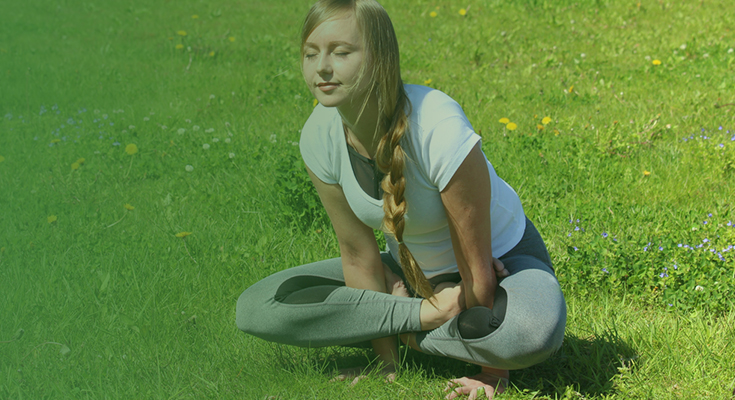Kukkutasana is also known as cockerel pose, and this is an advance yoga asana. This is for those people who can easily do the basic yoga asana and want to take their yoga practise to another level.
This Kukkutasana asana (Cockerel Pose) come under the arm balancing category, which is Padmasana group.
According to ancient yoga, Kukkutasana (Cockerel Pose) is one of the ancient yoga asanas, and Kukkutasana (Cockerel Pose) was also mentioned in the Tantra and Kundalini yoga practices.
The reason Kukkutasana is known as Cockerel pose because when you practise Kukkutasana steps, your body looks like a cockerel.
Today we will discuss Kukkutasana steps and benefits this will help you know the correct way of practising Kukkutasana steps.
Before we start with Kukkutasana steps, you should also understand the precautions, preparatory asanas, to practise this asana at ease.
Precautions of Kukkutasana (Cockerel pose) are:
– If you are suffering from any knee pain, do not practise Kukkutasana steps.
– If you are suffering from osteoporosis, do not practise Kukkutasana steps.
– If you are suffering from sciatica pain or any lower back pain, do not practise Kukkutasana steps.
– If you are suffering from pain in your arms and shoulders, do not practice Kukkutasana steps.
– If you are pregnant, do not practise Kukkutasana steps.
Preparatory Pose of Kukkutasana are:
- Lotus pose (Padmasana)
- Easy pose (Sukhasana)
- Scale pose (Tulasana)
You should practise these preparatory poses before you practise Kukkutasana to achieve maximum Kukkutasana benefits. These preparatory asanas will help your body to prepare for Kukkutasana (cockerel pose) because this is not some beginner yoga asana. This asana should be practised by trained yoga practitioners, and one must follow every step correctly to prevent injury.
Follow these Kukkutasana steps:
- First, you need to sit in a Padmasana pose, and then you need to place your arms in between your thighs and calves muscles.
- Then you need to hold your body weight with the help of your palm after placing your palms on the floor.
- Once you place your palms on the ground or a mat, you need to lift your body with the support of your hands upwards and make sure that your arms are straight.
- While practising Kukkutasana steps, make sure that your spine and neck are straight and you can also stare at an object in front of you.
- Try to hold this position for as long as you can. The maximum you can hold with practise is nearly five to six minutes.
After practising Kukkutasana steps, you should also practise some follow up poses like Cobra pose, crocodile pose, and corpse pose. Also, people with an excess amount of fat in their thigh area might find it difficult to practise this asana, therefore, you can apply some oil in that area to ease the practise.
Kukkutasana Benefits:
- This yoga asana helps to increase the strength of your shoulders and arms. If you have weak shoulders and arms, it yoga asana (with the proper guidance of an expert) can really help you regain that strength.
- If you want to increase your legs and hips flexibility, then the Kukkutasana benefits you to increase the flexibility of your legs and hips region.
- According to yogic science, Kukkutasana benefits you to awaken your Muladhara Chakra and also helps to awaken the Kundalini.
- Kukkutasana benefits to strengthen and contract perineum.
- Kukkutasana also helps to cure digestion problem and strengthen abdominal muscles.
- Kukkutasana benefits you to increase a sense of stability and balance in your body.
We hope that with the help of this article you understand the Kukkutasana steps and benefits. And how to practise Kukkutasana steps correctly and what are the precautions you need to keep in mind to achieve Kukkutasana benefits.

